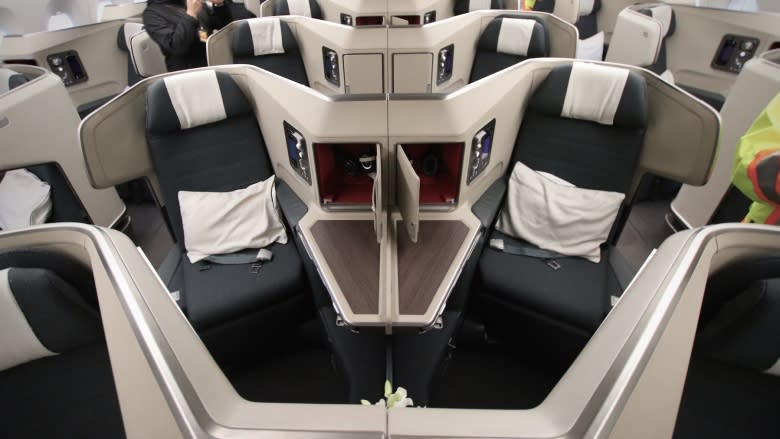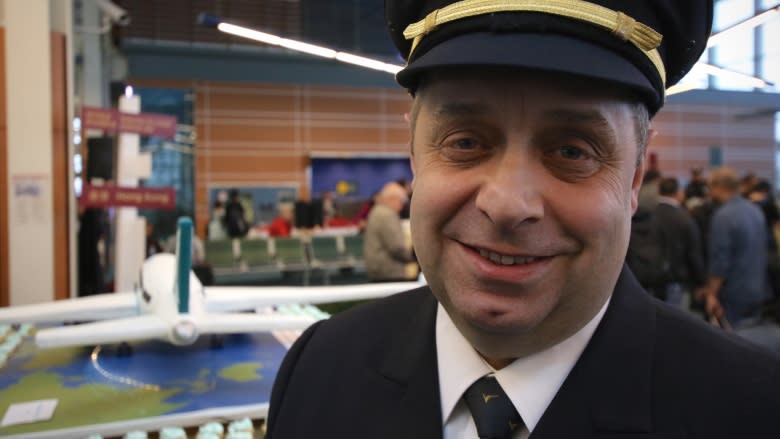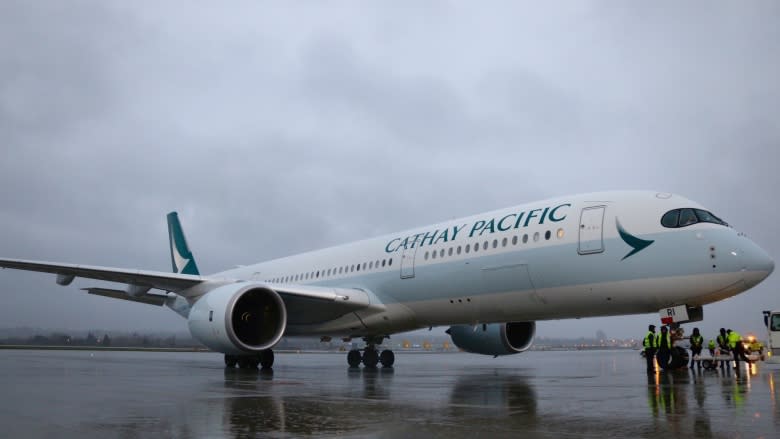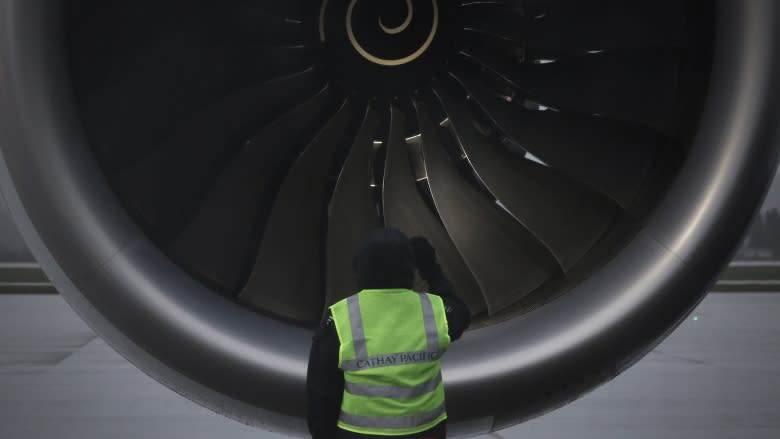Quieter, faster Airbus makes 1st scheduled Canadian flight to Vancouver
The passengers flying from Vancouver to Hong Kong didn't know they were scheduled to embark on Cathay Pacific's new Airbus A350-900 on Tuesday morning.
But with an airplane-shaped cake in the waiting area, a DJ and speeches, it quickly became clear to the travellers that they would be part of something unusual.
Tuesday's flight was the first time the new Airbus A350-900 landed in Canada on a scheduled flight, and began Cathay Pacific's use of the plane to service its Vancouver-Hong Kong route.
The airplane is Airbus's answer to the Boeing Dreamliner, which first showed up in Vancouver more than three years ago.
Both planes use carbon fibre in the fuselage and wings, which makes the aircraft lighter and allows the cabin pressure to be higher.
Michael Brown, the Airbus deputy chief pilot for Cathay Pacific, flew the A350 into Vancouver on Tuesday. He said the carbon fibre polymer-based fuselage and wings don't make much difference from a pilot's perspective, but it makes the plane lighter and allows for a more aerodynamic design.
"It certainly changes the way the airplane works for an airline and a passenger," said Brown. "You burn a lot less fuel."
The plane is 25 per cent more efficient, according to Brown, allowing for faster, longer flights.
"The A350 flies at mach 0.85, which is very fast for an airline aircraft," he said.
"For a passenger, the A350 is very, very comfortable," said Brown.
"Its cabin altitude is much lower, so when you're flying in a [Boeing] 747 at 39,000 feet, the cabin is at 8,000 feet of altitude. In an A350 it's about 6,000 feet or less. So it's much more comfortable an experience."
Brown said the added pressure means passengers breathe air with more oxygen in it, and the cabin humidity is higher.
For passengers, the cabin looks a little different from older planes, but similar to the Dreamliner. Business class features independent pods with a chair that folds out into a bed.
There's a premium economy section that gives the passenger a footrest that folds up and a little bit more seat width.
Most passengers will be in economy class, where the seat design adds precious centimetres here and there. The economy seats are 2.5 centimetres wider than the Dreamliner economy seats.
"Every centimetre counts," said passenger Amy Hanna before boarding her flight, "It's a last-minute trip, so I don't even know what plane I'm flying on."
"I'm excited, I just Instagrammed it," she said.
Xavery Mulholland was on his way to Nepal, with a stopover in Hong Kong.
"I'm pretty tall, so I'm hoping they give a little more leg room. That'd be nice, but width would be better for sure. They do get pretty tight, and I'm sure if you're squished right between a couple people, I'm sure the extra space will be beneficial, for sure."
"It'll be cool, for sure. I'm looking forward to it," Mulholland added.
Back up in the cockpit, Brown said the controls are different from those of older planes.
"The older aircraft have big steering wheels and everything's large and heavy and clunky and big fat switches. The A350 is very modern, very sophisticated. It's lightweight. Everything is just the right size and just the right place for a pilot," he said.
"The traditional instrumentation is gone and it's all computerized."
Cathay Pacific will use the new plane for three of its 17 round trips between Vancouver and Hong Kong each week.
Follow Rafferty Baker on Twitter: @raffertybaker







